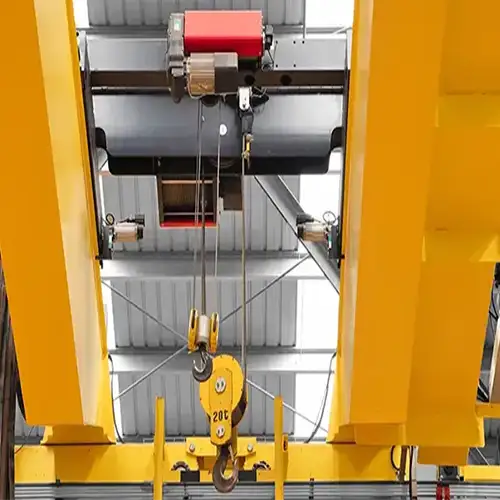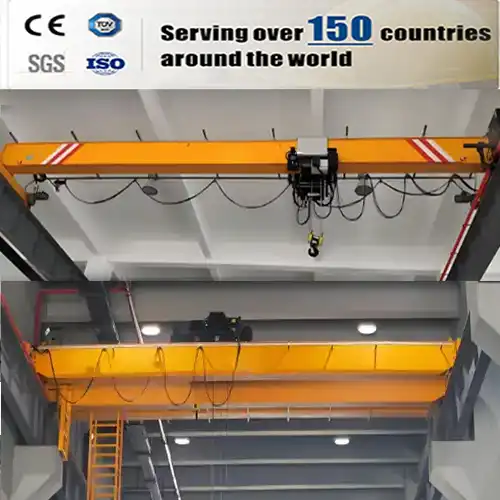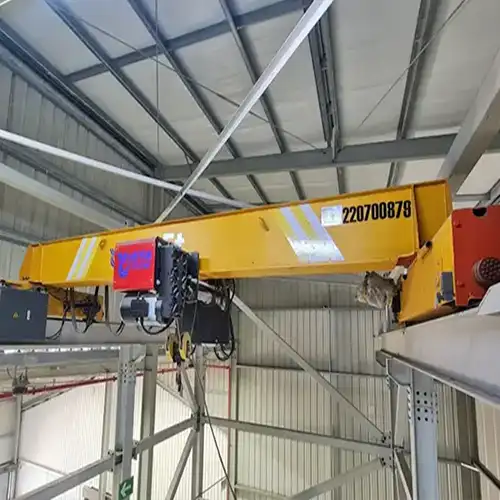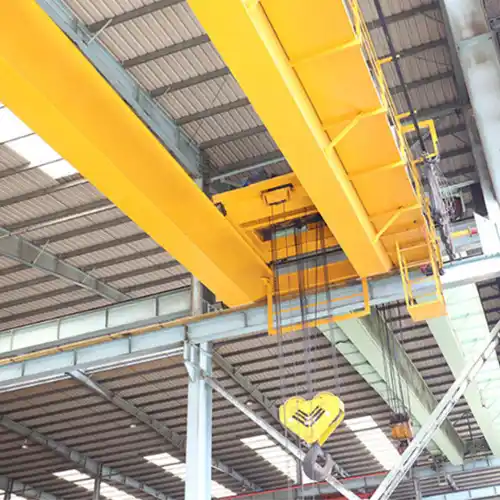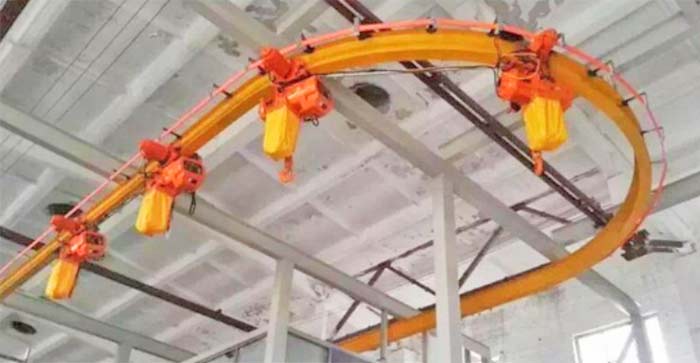
Overhead Crane vs.A Frame Gantry Crane, Monorail Cranes
Overhead crane, A frame gantry crane & monorail crane system, how to select ? Check overhead crane, gantry crane & monorail crane typical use and applications and how to select the right material handling crane for your use.
An overhead crane is typically the best piece of lifting equipment to use when lifting large, extremely heavy, or awkward objects around your industrial facility. These lifting equipment offer a level of safety and flexibility that is unmatched since they avoid obstacles by elevating objects above the floors on your site. Also, the bridge cranes can be moved by human operators with high levels of control and ergonomic effectiveness thanks to their control systems.
There are various types of overhead cranes. Due to the fact that each one is uniquely configured for the environment and application in which it will be used, it is entirely possible to assert that no two are exactly same. Yet, there are numerous distinct categories of bridge cranes, each of which is better suited for specific applications. That is why it is crucial to choose the proper type of crane for your facility and application.
The bridge crane, the A-frame gantry crane, and the monorail crane are three of the most popular types of overhead cranes that will be discussed in this article. We'll briefly go over each of these systems' distinguishing features and how it operates. Yet understanding the specific situations and uses that each type of crane is best suited for will be our main focus.
Overhead bridge cranes
An overhead bridge crane's configuration is simple to understand. It consists of two elevated runways that run parallel along the bridge crane's travel length. These runways can be built into your facility's support structure or, in the case of freestanding bridge cranes, can be supported by floor mounted columns.
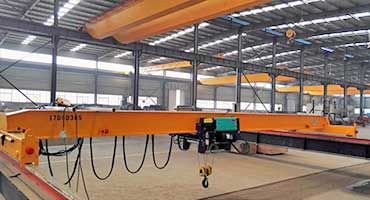
Single girder overhead travelling crane
Single girder overhead crane specifications: Capacity:3.2 ton to 16 ton, Span: 7.5m to 28.5m,Lifting Height: 6m to 18m,Working Class:A5. Ask for single girder overhead crane price.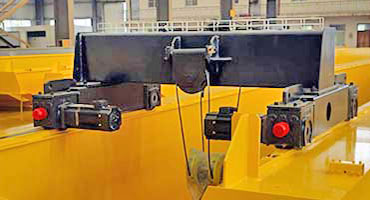
Double girder overhead travelling crane
Double girder overhead crane specifications: Capacity:5 ton to 100ton,Span: 10.5m to 31.5m,Lifting Height: 6m to 18m,Working Class:A5- A7. Ask for double girder overhead crane price.

Suspension crane
Underslung overhead crane specifications: Capacity:0.5 ton to 10 ton, Span: 3m to 31.5m, Lifting Height: 6m to 18m,Working Class:A3 to A5. Ask for underrunning crane price & suspension crane price.
A travelling single or double girder beam "bridges" or joins the runways. An end truck on each side of each girder supports it and may move the girder back and forth along the runway. (You may visualize this as a pair of elevated railroad tracks with one or two movable parallel ties between them.) A trolley that may travel from side to side along the girder is supported by each girder beam. A hoist and hook that can lift a load vertically are supported by the trolley in turn.
The distance between the runways, the amount of weight to be lifted, and the required lifting height largely determine whether a single or double girder bridge crane system is used. A double girder crane system is generally the best option if the distance between the runways is greater than 65 feet or the weight that needs to be lifted is greater than 15 tons. With a double girder crane system, the crane hoist is positioned on top of the girders, allowing for a higher vertical range of movement, therefore the hook height—how high above the floor the lifting hoist is required to lift—is also significant.
A frame gantry cranes
An overhead bridge crane and an A frame gantry crane are quite similar. The main distinction is that the girder, whether single or double, is supported by rigid legs that can move along the ground rather than resting on internal runways of the structure. The legs may travel along the floor on casters or, in certain circumstances, along a track that has been put in place in the floor. A frame gantry crane can be moved about your facility, in contrast to an overhead bridge crane whose position is fixed.
- A frame gantry crane . The material used to build an A frame gantry crane affects its mobility in some way. A frame gantry cranes made of lightweight aluminum may be really mobile and capable of being rolled from one area to another. A frame gantry cranes with stiff steel legs, however, are less maneuverable. When they are transported, they could actually need to be disassembled and reassembled.
- Semi-gantry crane. There are also what are known as hybrid A frame gantry cranes. These are single-leg configurations or semi-gantry crane configurations in which the overhead gantry crane has a leg on one end and the other end is attached to an overhead runway, much like an overhead crane. This type of gantry crane construction has the advantage of maximizing floor space and is especially useful for covering long spans.
- Adjustable gantry crane. A frame gantry crane's height can be fixed or adjustable. The most common type is the fixed height variety. They are best suited for applications with fixed and repetitive processes. An adjustable height gantry is more adaptable because it can be raised or lowered depending on the application or configuration of the location where it will be used. Of course, that adaptability comes at a cost. Height can be adjusted A frame gantry cranes are typically more expensive than fixed height cranes.
In general, the performance characteristics of an A frame gantry crane are similar to those of an equivalent overhead crane. A frame gantry cranes, on the other hand, are typically less expensive than overhead cranes.
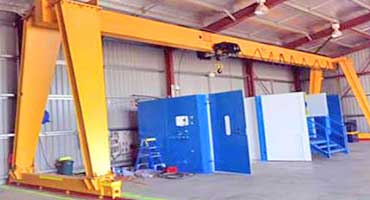
Single girder gantry crane
Single girder gantry crane specifications: Capacity: 1ton-20ton, Span Length: 8~30m, Working Class: A3, A4. Ask for single girder gantry crane price.
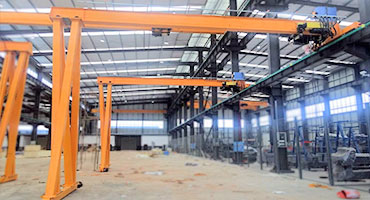
Semi gantry crane
Semi-gantry crane specifications: Capacity: 2 ton- 10 ton, Span Length: 8~20m, Working Class: A3, A4.Ask for semi-gantry crane price.
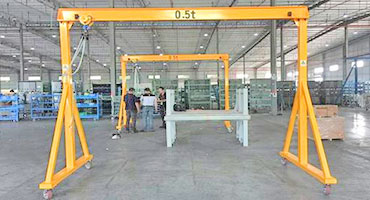
Portable gantry crane
Portable gantry crane specifications: Capacity:0.25 ton -10ton, Span length: 2~16m,Lifting height : 2~12m, Working class : A2.Ask for small gantry crane price.
Monorail crane system
Monorail cranes are made to tackle the time-consuming, repetitive tasks which lead to staff burnout. A monorail crane can speed up the process and boost efficiency at the workplace in applications where goods need to be transferred laterally from one place to another. Our monorail crane systems are an affordable substitute for larger, more complex cranes and might be a wonderful choice for locations that have room for a bridge crane.
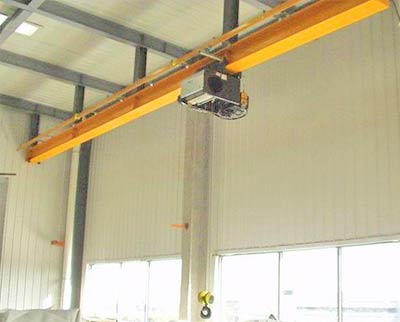
Ceiling mounted monorail cranes
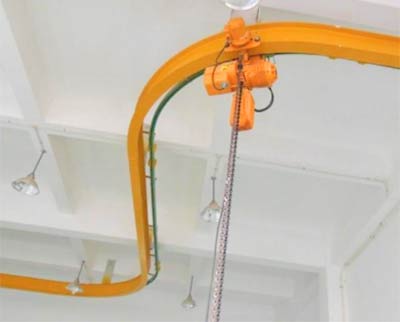
Curved monorail crane with ceiling crane design
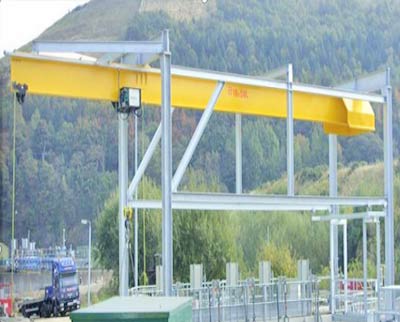
Freestanding monorail cranes for indoor and outdoor use
- Lower costs: Monorail material handling systems are an affordable option because they are reasonably easy to install. Compared to other crane types, they require less maintenance, which lowers the overall cost of ownership.
- Increased customizability: Monorail cranes provide more design freedom. Its track lengths are essentially limitless, and depending on your application requirements, they can either be ceiling-mounted or freestanding. Many tracks, curved tracks, switches to numerous spurs, and a variety of hanger alternatives, such as hangers for slopes, wood beams, flush-mount applications, and drop rods, are additional useful design possibilities for monorail cranes.
- Improved coverage: Our monorail cranes provide nearly infinite track lengths thanks to the use of track splices, allowing you to expand coverage and carry loads to multiple work locations or even throughout your whole facility.
For which applications are each of the crane types best suited?
Overhead bridge cranes are typically used for heavy loads handling. They are typically the largest crane type and are used to transport the heaviest loads. The double girder bridge crane configuration is particularly well suited to applications with a large span between the runways or a particularly large or heavy load.
The supporting runways of an overhead bridge crane may be built into the structure of the facility, making it ideal for large, permanent installations where the design of the crane is integral to the design of the building. These bridge cranes, however, are not limited to fixed-location applications. Freestanding bridge cranes are also popular because of their modular design, which allows them to be easily relocated to other areas of your facility.
A Frame gantry cranes are ideal for mobile or outdoor applications. They are frequently used in storage yards, shipyards, rail yards, and construction sites for loading and unloading. They are also ideal for transporting loads between locations on a site or between buildings due to their mobility.
The gantry crane is the crane of choice when the need for a crane at a specific location is temporary or when it is to be used in a facility that is leased rather than purchased. They are also at the top of the list when the workflow or application is likely to change frequently.
Monorail cranes perform particularly well in applications where the load's path of travel is fixed, even if it does not follow a straight line. Production lines and continuous operations, such as painting processes, are examples.
Because the topology of a monorail crane's route of travel varies, special consideration must be given to the design to ensure that the crane is properly supported and that appropriate margins of safety are maintained at all points in the workflow.
How to determine which lifting crane design is best for you
Naturally, the applications for which the crane will be used should be your first priority. For instance, an overhead crane may be necessary if you need to move heavy loads across a sizable fixed area. A monorail crane can be the best option if the path of motion is fixed but not linear. A frame gantry crane will likely be the best option if the workflow or application will vary frequently, or if outdoor or portable operation is needed.
Beyond the application, a key factor in choosing the lifting crane type that will best suit your needs is the facility in which the crane will be operated. Your safety must be your top priority. For instance, OSHA requires that your crane installation must have a three-inch overhead clearance and a two-inch lateral clearance. Naturally, the sort of overhead crane that is best for your case will depend on the nature and location of the building's structural components, such as beams and columns, as well as other equipment placed on the building's floor.
The design elements that will be required for your overhead crane installation will depend on the layout of your business in addition to safety considerations. Is there space and the right foundational support for the installation of runways over the length of the project, for instance, if you are thinking about using an overhead crane? Are there any non-movable objects in the room, such as load-bearing columns, that would restrict the range of motion your crane installation may have?
In terms of these considerations, the fact that overhead cranes are typically not off-the-shelf purchases is actually an advantage. Most cranes sold for industrial use are meticulously engineered to fit the intended environment and application. As a result, you'll have a great deal of flexibility in selecting the right crane for your needs. Expert assistance is available and should be brought into the project as early as possible.
